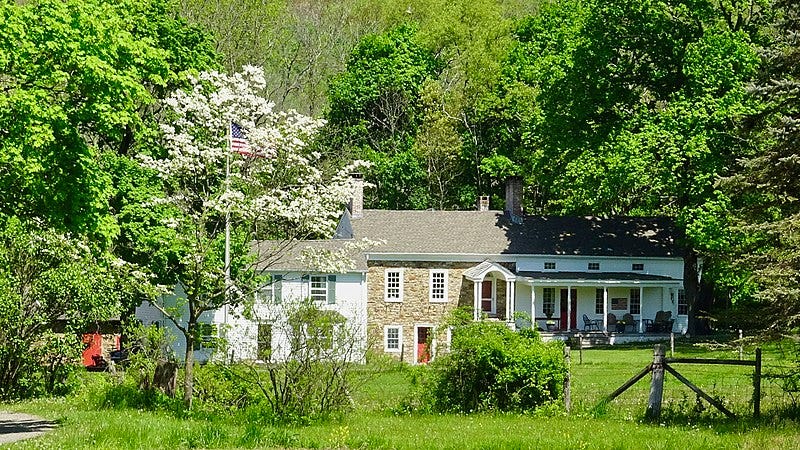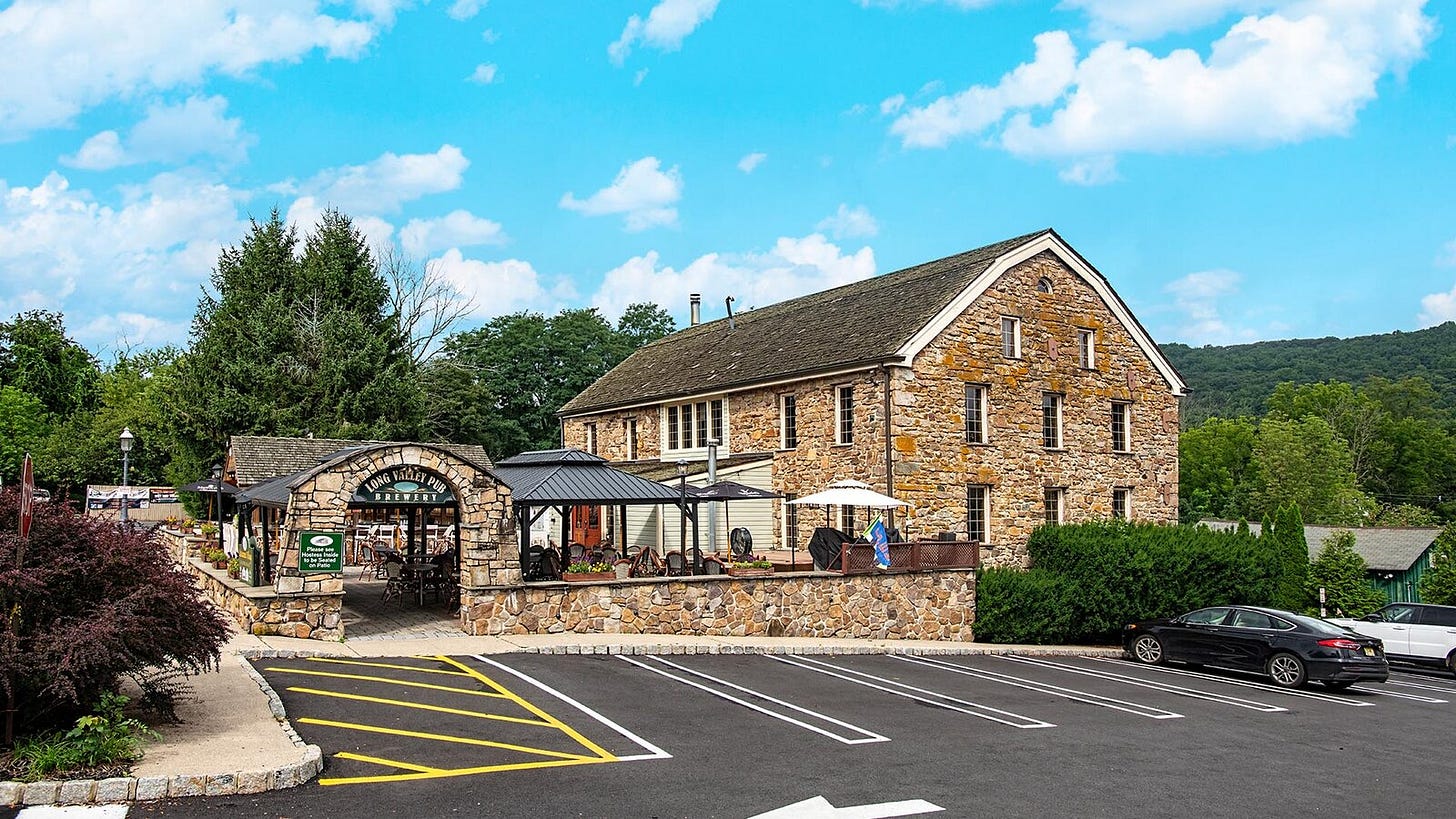Hometown History Homework #8: Long Valley’s German Heritage
It feels like fall in Morris County. And even though we’re set to see some summer-like temps this week, I’m ready to embrace everything that the new season has to offer: pumpkins, apple picking, fall festivals, and the beautiful transition of nature from green to rustic hues. As we said in Episode 4, fall is this area’s superbowl. No place in New Jersey does it better.
So it seems fitting to end this summer sojourn through the history of New Jersey back at home. More specifically, in Long Valley, NJ.
Hometown History NJ is now a 501c3 nonprofit. We need your support to keep doing the work we do. Find out more about our plans here, and consider a small donation today.
How I got here:
As I mentioned, the beauty of fall is everywhere right now. But just yesterday I was running an errand that took me through Long Valley, NJ and the gorgeous vistas of that town had me slowing down to take in the picturesque views (I may have gotten honked at once or twice, because of course this is still New Jersey). In the moment I was hard pressed to think of anywhere else in New Jersey that represents the “Garden State” as well as Long Valley does, even my own hometown of Mendham.
In the busy day to day of running a nonprofit and being a parent to young children, I don’t often have the opportunity to venture much further west than the Chester ShopRight. So I was thrilled to get the opportunity to learn a bit more about the history of Long Valley…or should I say “German Valley.”
The short version of the story:
Today, Long Valley is an unincorporated community within Washington Township, in Morris County. It was settled in the mid 1750s by Palatine Germans (Apparently, the Palatines were a centuries old community from the Rhine valley with connections to the Roman Empire - crazy!)
So how did this group find themselves settling in the bosom of New Jersey? The following is from W.W. Munsell’s “A History of Morris County” from 1882 (a primary source we often turned to in Season 1 of Hometown History):
“All accounts…point to the year 1707 as the time that the first settlers of this township set foot on the shores of the New World. They came from Saxony in Germany, from the vicinity of a small city called Halberstadt. They were Protestants, some of them being Lutherans and others of the Reformed faith. Wearied out by Romish oppression and persecution, they left their homes to seek a place where they could worship God in the way they thought right, without fear or molestation. It was in the year 1705 that they set out. At first they went to Neuwied, a town in Prussia. Their stay in Neuwied was short. From there they went to Holland, at that time the freest country in Europe, and in 1707 they sailed for America.”
The Palatines had made many friends in Holland, so their intention was to sail for New York City, which was at the time a Dutch colony.
“But the winds were adverse, and instead of reaching the Dutch settlement they were carried south to Delaware Bay. Sailing up the bay and river, they landed at Philadelphia, which had been settled by the English Quakers about twenty-five years before. Preferring still to make their home with the Dutch they determined to finish their journey to New York by land. Accordingly they left Philadelphia from a point known as the corner of Fourth and Vine streets, and passing up through Pennsylvania they crossed the Delaware at the spot where we now have the villages of Lambertville and New Hope. Thence by what is known as the "old York road" they came to the site of Ringoes. From this point the precise course which they took is not known; but they traveled in the general direction of New York until they arrived in the region now known as German Valley.”
When they got here the Palatines were so flabbergasted by the beauty of the area that they had to stop and take in the sights:
“Tradition has it that when these early settlers saw the beautiful country spread out before them one of their number exclaimed, "This, this indeed is the promised land which the Lord designed for us before we left our homes;" and the whole company forth-with agreed to give up their project of going to New York, and to settle down and make their homes in this peaceful valley.”
So by the mid-1700s a settlement of Palatine Germans had formed along this branch of the Raritan river, in an area Lenni Lenape had named “Long Valley”. But by 1804 residents had changed the name to “German Valley” to reflect its culture and heritage (When did they change the name back to “Long Valley”? We’ll get to that in a bit.)
The center of town life in German Valley took place at the intersection of what we know today as East Mill Road, West Mill Road, Schooley’s Mountain Road and Fairmount Road. By 1844 the entire township had 12 stores, one lumber yard, one forge, one tannery, four flouring, six grist, eight saw, and four oil mills. One author observed at the time that the people of German Valley “retain the industrious and thrifty habits of their ancestors.”
By the early 1800’s Washingtown Township and its surrounds had become synonymous with Schooleys Mountain springs (a bigger topic for another time) which drew loads of visitors to the area. The early industrial age further increased the population in German Valley, even though most believe German Valley residents were not directly connected with mining or iron manufacturing. They were generally farmers and small businessmen ready to provide the foodstuffs and products necessary for living in and around the villages. But because of their indirect dependence on iron, German Valley suffered when, in the 1890's, the iron business collapsed and new lodes of ore were discovered west of Pennsylvania.
By the early 20th century German Valley had regressed to its agricultural-based economy. Little of note occurred in German Valley until the outbreak of WWI. Anti-German sentiment was on the rise, and in response, the town voted in 1918 to adopt its original Lennape name “Long Valley.”
But while Long Valley may no longer go by its German moniker, the community continues to tout its German heritage in a number of ways. For instance, in 1771, a German settler with the surname Trimmer built a large stone barn for his dairy cows and hay right at the center of town. He mortared the stones with clay, lime, and horsehair. Today what remains of that structure has been turned into The Long Valley Pub and Brewery, which, according to its website, is holding its Oktoberfest event on Saturday Oct. 5th. See? I told you this place knows how to do Fall!
Hometown History NJ is going LIVE! Register for one of our upcoming live events in September and October
Final Thoughts:
Theres nothing like a summer of homework to make you appreciate just how culturally and historically rich New Jersey is. At every turn across this series I found myself in awe of the fascinating, quirky, and unbelievablely true stories of the people, places and events that make up the history of New Jersey. And trust me, there were many, many stories left unexplored due to limited time and resources. And we at Hometown History would love nothing more than to give those stories the attention they deserve.
With that being said, this is the final installment of Hometown History Homework, but we still have lots going on this fall and beyond. Check out our latest update for information on our upcoming live events, a new BONUS Mendham episode hitting your podcast feeds and so much more.
Links:
https://wtlt.org/properties/historic-long-valley/
https://sites.rootsweb.com/~njmorris/history/munsellhistory/h-chpt36.htm
https://archive.org/details/historyofmorrisc00pitn/page/n183/mode/2up?view=theater
https://catalog.archives.gov/id/135815479
https://www.wtmorris.org/index.php/home/about








